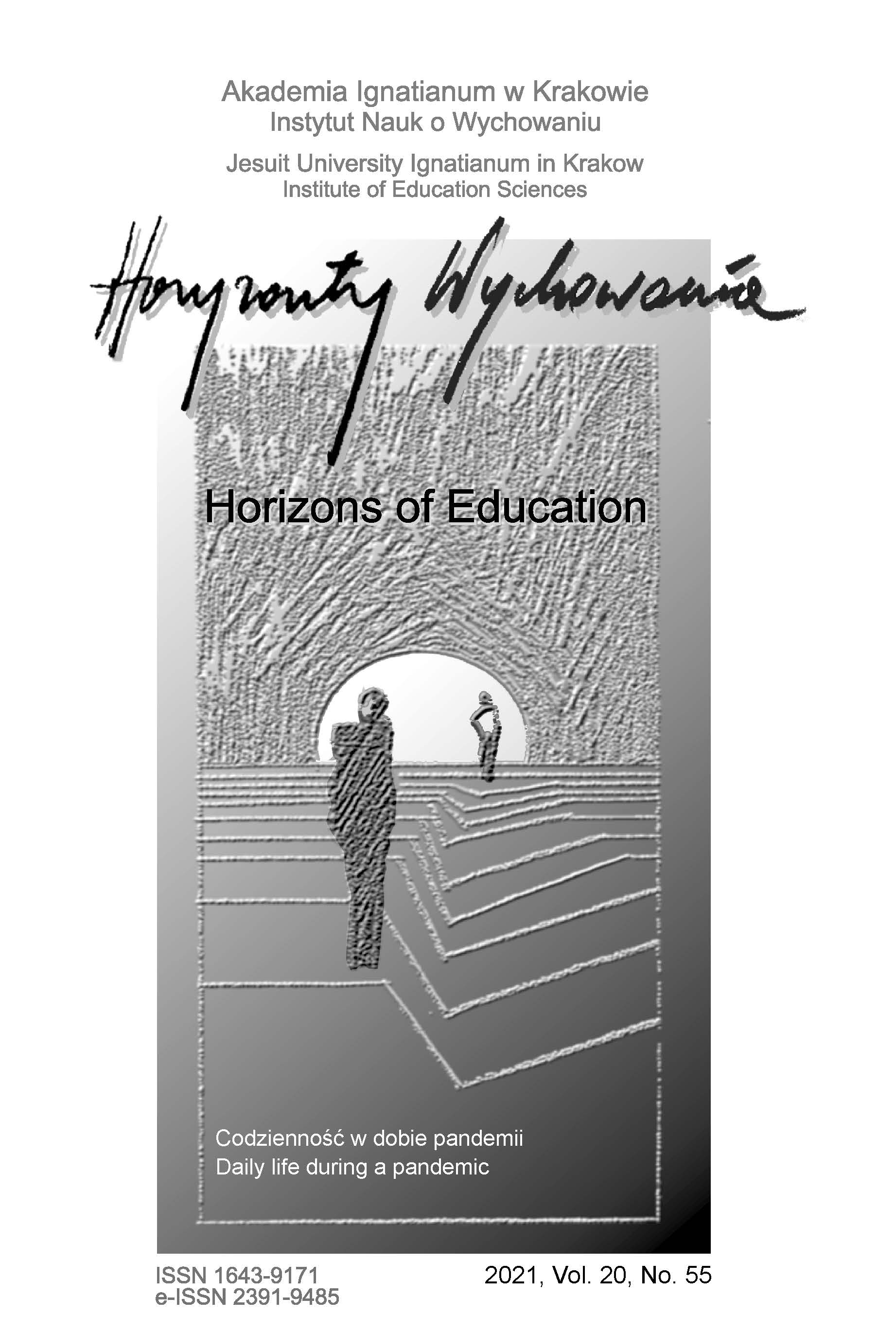Integrated Education in the Age of Qualitative Didactic Crisis
Abstract
RESEARCH OBJECTIVE: An attempt to assess the didactic‑qualitative crisis manifested in integrated education, taking place in a typical school during traditional classes with children in grades 1‑3.
THE RESEARCH PROBLEM AND METHODS: In the presented article, qualitative – critical analysis covered the complexity, ambiguities and barriers to the implementation of the concept of inte‑ gration in social practices by teachers The descriptive‑explanatory‑interpretative method was used.
THE PROCESS OF ARGUMENTATION: The key importance of early childhood education was presented in terms of the quality of education in the actually existing state in schools.
RESEARCH RESULTS: Indication of qualitative strategies supporting holistic development of the child.
CONCLUSIONS, INNOVATIONS, AND RECOMMENDATIONS: Metamorphosis of the way of teaching – learning, searching for traces of constructivist “otherness.”
References
Giddens, A. (1990). The consequences of modernity. Stanford University Press.
Gnitecki, J. (1996). Teoria zintegrowanych zadań szkolnych. Wydawnictwo Naukowe PTP. Oddział w Poznaniu.
Illeris, K. (2006). Trzy wymiary uczenia się: poznawcze, emocjonalne i społeczne ramy współczesnej teorii uczenia się (A. Jurgiel, tłum). Wydawnictwo Naukowe Dolnośląskiej Szkoły Wyższej Edukacji TWP.
Karbowniczek, J. i Kucharska, B. (2021), W poszukiwaniu nowej jakości edukacji wczesnoszkolnej – podejście paradygmatyczne i swoiste (re) interpretacje. W: H. Bejger, O. Lisovets i S. Borysyuk, Aktualne problemy społeczne Ukrainy i Polski. Aspekty edukacyjne i socjokulturowe (s. 10‑23). Państwowa Wyższa Szkoła Zawodowa w Chełmie, Chełmskie Towarzystwo Naukowe.
Klus‑Stańska, D., (2005). Pozory integracji. W: D. Klus‑Stańska i M. Nowicka, Sensy i bezsensy edukacji wczesnoszkolnej (s. 188‑192). Wydawnictwa Szkolne i Pedagogiczne.
Klus‑Stańska, D. (2015). Dezintegracja tożsamości i wiedzy jako proces i efekt edukacji wczesnoszkolnej. W: D. Klus‑Stańska (red.), (Anty)edukacja wczesnoszkolna (s. 24‑57). Oficyna Wydawnicza „Impuls”.
Kwieciński, Z. (2007). Potrzeba alfabetyzacji krytycznej. W: J. Rutkowiak, D. Kubinowski i M. Nowak (red.), Edukacja, moralność, sfera publiczna. Materiały z VI Ogólnopolskiego Zjazdu Pedagogicznego PTP (s. 397‑407). Oficyna Wydawnicza „Verba”.
Lave, J. i Wenger, E. (1991). Situated learning: legitimate peripheral participation. Cambridge University Press.
Nowak‑Łojewska, A. (2007). Wprowadzenie. W: I. Kopaczyńska i A. Nowak‑Łojewska, Wymiary edukacji zintegrowanej (s. 4‑9). Oficyna Wydawnicza „Impuls”.
Olesen, H.S. (1989). Adult education and everyday life. Roskilde University.
Rogers, C. (1983). Freedom to learn for the 80’s. Merrill Pub Co.
Zalewska, E. (2003). Teoretyczne konteksty nauczania zintegrowanego – rekonstrukcja przez powrót do źródeł. W: D. Klus‑Stańska, M.S. Szymański i M.J. Szymański, Renesans(?) nauczania całościowego. Współczesna dydaktyka wobec nauczania zintegrowanego, blokowego i przedmiotowego (s. 97‑112). „Żak”.
Copyright (c) 2021 HORIZONS OF EDUCATION

This work is licensed under a Creative Commons Attribution-NoDerivatives 4.0 International License.
Authors who publish in this journal agree to the following terms:
- Authors retain the copyright to their work while granting the journal the right of first publication. The work will be simultaneously licensed under a CC BY-ND license, which permits others to share the work with proper credit given to the author and the original publication in this journal.
- Authors may enter into additional, non-exclusive agreements for the distribution of the published version of the work (e.g., posting it in an institutional repository or publishing it in another journal), provided that the original publication in this journal is acknowledged.
We allow and encourage authors to share their work online (e.g., in institutional repositories or on personal websites) both before and during the submission process, as this can foster beneficial exchanges and lead to earlier and increased citations of the published work. (See The Effect of Open Access). We recommend using any of the following academic networking platforms:





